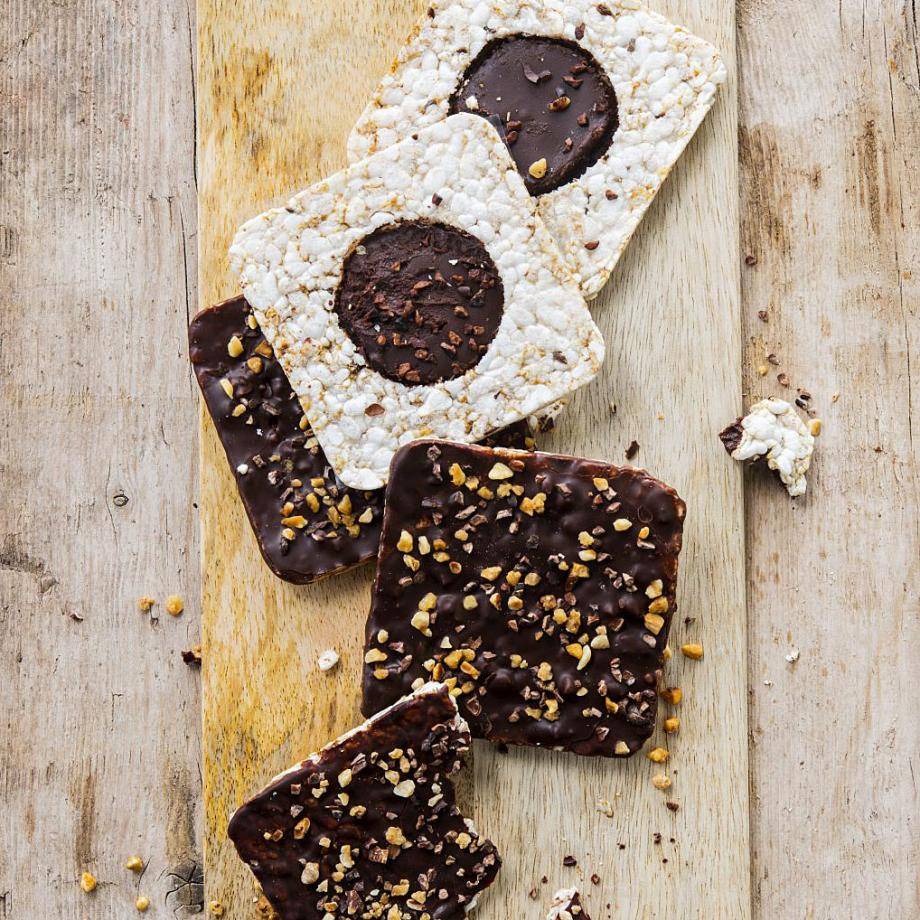What are the different sugar reduction strategies in chocolate?

Sugar reduced mini donuts
1 - Reduce sugar without claim
The first question to ask yourself is whether you want to make a sugar reduction claim on pack or not. If that’s not the case, you have 2 options:
- Gradually reduce sugar
- Reduce sugar up to 30% (30% is the threshold at which a claim can be made)
In both cases, Barry Callebaut experts can support you by helping you reformulating your chocolate recipe.
2 - Sugar reduction claim
In order to make the claim “Sugars reduced”, added sugars in your overall product need to be reduced by at least 30%.
Be careful: the benchmark not your current product. The benchmark is against a range of reference of products on the market that are not reduced in sugars.
At Barry Callebaut, we selected the most suitable fibers for a balanced taste profile, good workability and digestive tolerance.

Rice wafers coated in no added sugar chocolate
3 - No added sugar
Removing sugars on the ingredient list? Not adding any sugar to the chocolate recipe? That’s the “without added sugar” option.
- If polyols (such as maltitol, erythritol, …) are used in your product recipe, there is a risk of laxative warning on pack. In order to avoid it, the overall polyol content of your product should stay below 10%.
- If fibers are used (such as chicory root fiber) or polyols are below 10% in the recipe, there is no laxative warning.
4 - Sugar-free
The “sugar-free” claim means completely removing sugars from the nutritional table: no more than 0,5% sugars can be in the final product. This type of chocolate is particularly suitable for diabetics but come with a laxative warning.
We use a combination of maltitol and sweeteners such as stevia to replace sugars, and we remove lactose from our milk powder, so no sugars are left in the nutritional.






